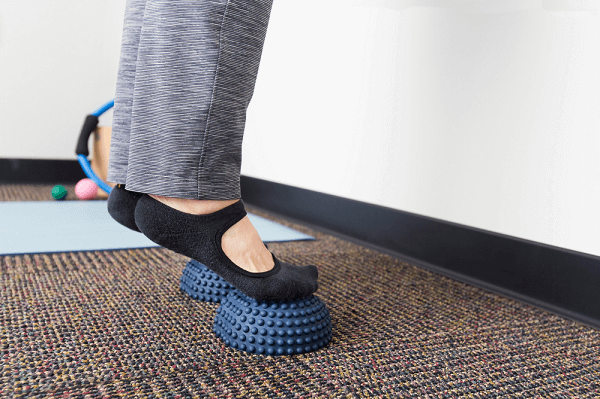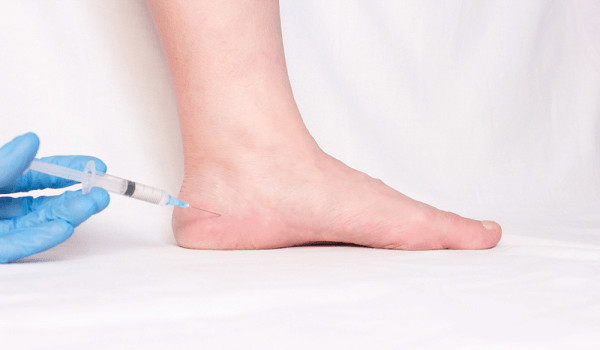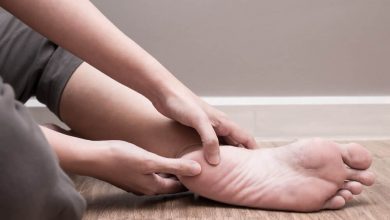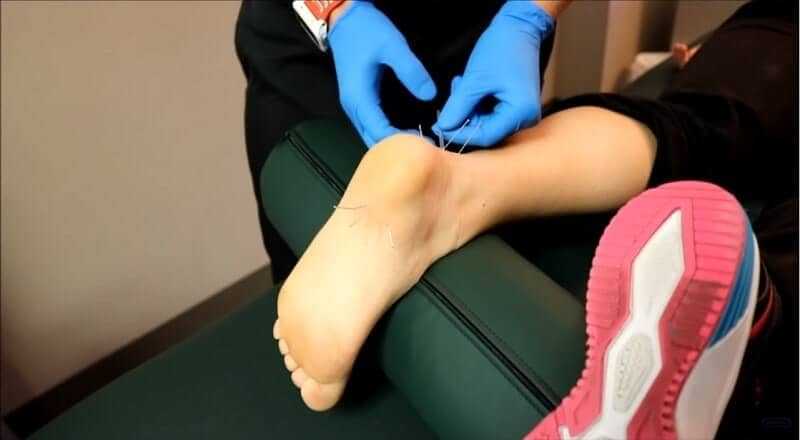6 Ways to Help Prevent Plantar Fasciitis

Fortunately, there are steps that you can take to prevent plantar fasciitis occurring, to prevent the condition worsening and to prevent plantar fasciitis returning in the future. These are simple strategies that you can incorporate into your lifestyle and exercise regime to prevent this painful foot condition interfering with your life.

If you have a history of plantar fasciitis, these strategies will help to ease the pain and to prevent it returning. If you have experienced foot and heel pain, but it hasn’t been diagnosed as plantar fasciitis, they will ease your discomfort and help to avoid more serious problems.
1. Take good care of your feet.
Always wear good quality shoes that support the arches of your feet and cushion the heels. If you work in a standing position, particularly on hard surfaces, place a thick rubber mat under your feet to cushion your them and reduce stress and strain to your feet, ankles and calf muscles. When standing for any length of time, alter your position periodically and shift your weight from one foot to the other. If you continue to have problems at work, speak to Human Resources about finding a solution.

2. Exercises for your feet.
There are specific plantar fasciitis exercises that stretch the Achilles tendon, the calf muscles and the plantar fascia itself. Many people find that doing these strecthes before going to bed, prevents the pain that commonly occurs when taking the first few steps the following morning. Form the habit of doing specific plantar fasciitis exercise morning and night to prevent a repeat attack and for relief from pain. It is also important to stretch the tendons and ligaments in your feet, legs and ankles before you start any form of exercise.

3. Maintain a healthy weight range.
Extra weight puts added strain on all the ligaments of the body but especially on the ones in the feet. Maintaining a healthy weight will ease the burden on your feet and help to prevent plantar fasciitis. You will also have the added benefits of extra energy, feeling and looking better than when you were overweight.
4. Get regular exercise.
Establishing sensible exercise habits, by doing at least 30 minutes of moderate activity on most days of the week, will help to strengthen all your muscles. Other benefits of regular exercise include improved heart and respiratory health, increased energy, improved mental function and feeling of well-being. Exercise to your fitness level and increase the time and intensity gradually and only when you feel ready. Make sure the shoes you wear for your chosen form of exercise are correct for that activity, fit you well and support your heels and arches. If you don’t know where to start with regular exercise, try a 30 minute walk of moderate intensity, around your neighbourhood four to six days a week.
5. Choose your exercise wisely.
The type of exercise you do may actually be contributing to plantar fasciitis. Runners are particularly prone to developing the condition, especially if they run on the road or other hard surfaces. Buy the best sports shoes you can afford and make sure they are designed for the type of activity you mostly do. If you feel pain, rest and ice the affected area and change to a different type of activity until the condition eases. If your preferred activity seems to be the cause, alternative with another. If you run or jog, try to run on grass or dirt rather than cement or hard surfaces.

6. Avoid bare feet.
Many people love to kick their shoes off and go around the house bare-foot. This is not recommended for those who have suffered from plantar fasciitis in the past because there is no support for the arch of the foot. To help prevent the condition, get into the habit of slipping on supportive footwear as soon as you get out of bed and leaving them on all day. Slipper and flip-flops do not give support to the foot and can cause stress which may lead to plantar fasciitis.

Take on these 6 ways plantar fasciitis can be prevented to ease the pain of the condition, prevent it getting any worse and to prevent it returning in the future.




